Exploring Telescopes with Smartphone Apps: A New Era
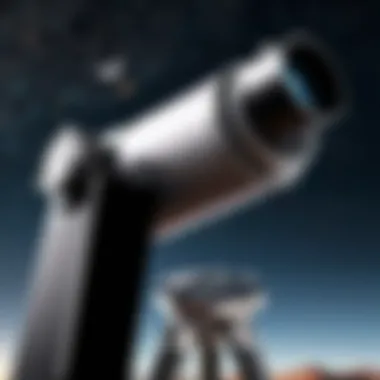
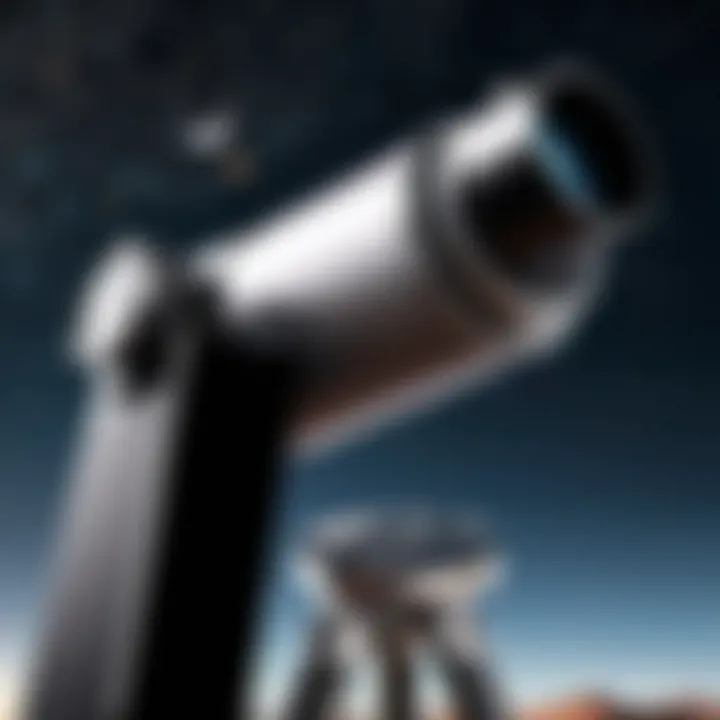
Intro
The fascination with celestial bodies has existed for centuries. With advancements in technology, astronomy has evolved significantly. The integration of smartphone applications with telescopes marks a notable shift. This has made stargazing more accessible and engaging for enthusiasts at all levels. The marriage of traditional equipment and modern tech not only enhances viewing experiences but also democratizes astronomical exploration.
Smartphone apps transform how users interact with telescopes. They offer capabilities that were previously unimaginable. Users can access databases of celestial objects, navigate the night sky, and receive personalized recommendations based on location. The critical aspect of this evolution lies in understanding how these apps work with telescopes, enhancing capabilities while simplifying usage.
The upcoming sections will explore technical specifications of modern telescopes, their practical applications, and the latest trends impacting how we view the universe. This article aims to provide makers of telescopes and tech-savvy individuals with valuable insights, making the case for why incorporating apps into your stargazing experience can elevate your understanding of astronomy.
Next, we will delve into the technical specifications that cater to this growth in user experience and accessibility.
Understanding Telescopes in Contemporary Astronomy
Telescopes are vital tools in the study of astronomy, allowing both amateur and professional astronomers to explore the universe. Their importance in contemporary astronomy is multifaceted, encompassing advancements in technology, improved accessibility, and enhanced understanding of celestial bodies. As we delve into this integration of telescopes and smartphone applications, we will uncover how these instruments contribute to modern astronomy practices.
The Basic Functionality of Telescopes
The primary function of telescopes is to collect and magnify light from distant objects, enabling us to observe galaxies, stars, and planets. They operate on basic principles of optics, utilizing lenses or mirrors to focus light. The two main types of telescopes, refractors and reflectors, serve different optical requirements. Refractors use lenses, while reflectors employ mirrors. Understanding how these telescopes work allows users to choose tools that align with their observational goals.
Recent innovations have improved image clarity and light-gathering capabilities. This is particularly beneficial for observing faint objects in the night sky. The integration of smartphone apps can further enhance these capabilities by providing real-time data and advanced imaging options.
History and Evolution of Telescopes
The development of telescopes has a rich history that dates back to the early 17th century. Initially, telescopes were simple devices that sparked a new era of discovery. Pioneers like Galileo and Newton transformed our understanding of the cosmos with their groundbreaking observations. Throughout the centuries, telescope designs evolved, incorporating better materials and technology.
By the 19th and 20th centuries, larger observatories emerged, equipped with powerful telescopes. The Hubble Space Telescope, launched in 1990, symbolizes a significant leap in our ability to explore deeper into space. Understanding this evolution highlights the continuous quest for knowledge in astronomy and sets the stage for modern advancements, including the smartphone technology that complements telescope use today.
Types of Telescopes: An Overview
Telescopes come in various types, each designed for specific observational tasks. The main categories include:
- Refractors: These telescopes use lenses to bend light and form images. They are popular for planetary and lunar observation due to their ability to produce sharp images.
- Reflectors: Using mirrors, these telescopes can gather more light, making them suitable for deep-sky observation. They can achieve larger apertures, allowing capture of faint objects.
- Catadioptrics: Combining lenses and mirrors, these telescopes offer versatility. They are often compact and favored for their user-friendly designs.
- Radio Telescopes: These specialized instruments detect radio waves from celestial objects, expanding our understanding of astrophysical phenomena.
Each type of telescope presents advantages and disadvantages. A user's choice largely depends on their interest—be it planetary observation or deep-sky exploration.
The evolution and types of telescopes not only reflect the technological advances in astronomy but also underscore the shift towards more accessible and user-friendly tools.
Integration of Smartphone Applications
The integration of smartphone applications with telescopes marks a significant turning point in the field of astronomy. It revolutionizes how users interact with astronomical equipment and access celestial information. This integration optimizes the overall experience, blending traditional observational methods with modern technology. Accessibility is a key benefit. Applications can simplify complex tasks, making them more approachable for enthusiasts and casual users alike.
How Smartphone Apps Enhance Telescope Functions
Smartphone applications extend the functionalities of telescopes in various ways. They facilitate precise aiming and alignment, enabling users to locate celestial objects with ease. For example, apps like SkySafari allow users to point their smartphone towards the night sky and identify constellations and planets in real-time. These enhancements lead to a more intuitive experience.
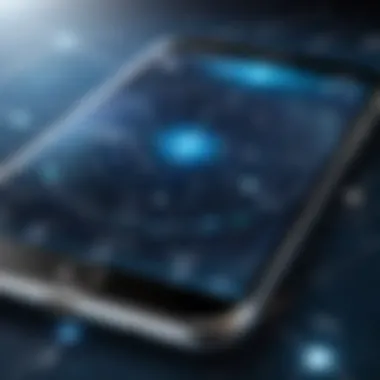
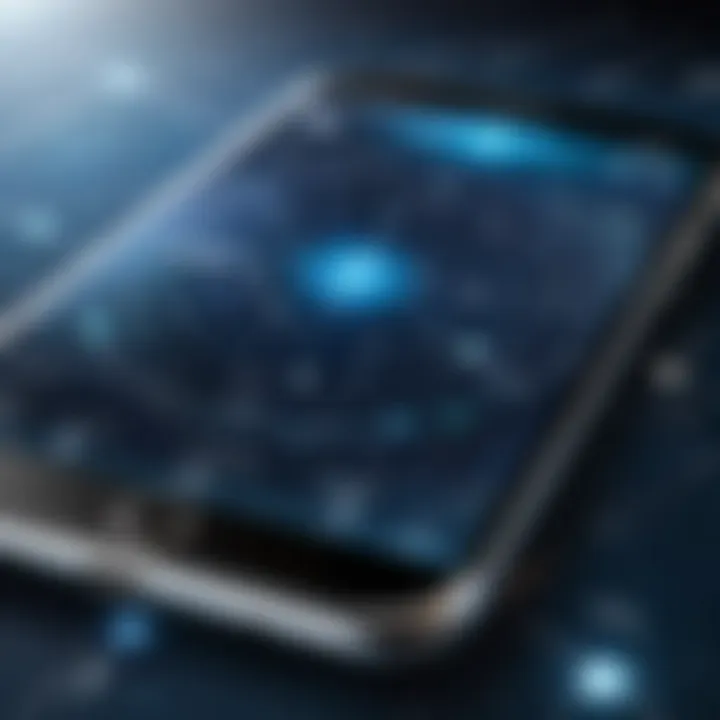
Moreover, smartphone apps often include advanced features such as image capture and sharing capabilities. Users can take pictures of the celestial objects they observe, which can be directly saved to their device. This sharing feature fosters a sense of community among users.
Navigational Features of Astronomy Apps
Navigational features within astronomy apps are vital for effective observation. Most apps allow for augmented reality (AR) capabilities, which overlay digital information onto the physical sky. This helps users learn about the locations of stars and other celestial bodies.
Additionally, these apps provide star maps and tracking options. For example, Stellarium presents a dynamic view of the sky, updating in real-time as users move their smartphones. This function not only enhances understanding but also improves engagement with the astronomical field.
Data Collection and Analysis Capabilities
Data collection and analysis are critical components of modern astronomy. Smartphone applications enable users to record observations, monitor celestial events, and analyze data. For instance, some apps can log the position of celestial objects over time, offering valuable insights for both amateur and professional astronomers.
Apps also provide educational resources and tutorials, further enriching the user's learning experience. Features that allow users to share their findings contribute to a growing database of astronomical knowledge. The combination of accessibility and robust data analysis tools solidifies the importance of smartphone applications in contemporary astronomy.
Factors to Consider When Choosing a Smartphone-Compatible Telescope
When selecting a smartphone-compatible telescope, several factors ensure optimum performance and user satisfaction. Understanding these elements helps users navigate their choices more effectively. Different features can greatly enhance the viewing experience, making astronomy more accessible and enjoyable.
Optical Quality and Design
The optical quality is fundamental in determining how well a telescope can gather light and resolve details. Types of lenses and mirrors used play a crucial role in this. High-quality optics lead to sharper and clearer images of celestial bodies. Commonly, refractor telescopes rely on lenses while reflector telescopes use mirrors.
The design influences setup and maintenance. A compact design often means easier portability, making it more suited for amateur astronomers who travel to observation sites. Evaluating the quality of the optical elements can be challenging. Consider not only the material, but also the manufacturers' specifications such as the focal ratio and coatings that enhance light transmission.
App Compatibility and Features
Compatibility of apps with the telescope is critical for maximizing its capabilities. Key features to look for include user interface, real-time tracking, and data integration. User-friendly applications can significantly enhance the observational experience. Some apps offer augmented reality features, which overlay information about the night sky directly onto the star field seen through the telescope.
Moreover, explore what each app can do. Some are designed for star identification, while others facilitate astrophotography or in-depth research. Understanding what the app offers can guide users in making an informed decision. It also determines how effectively you'll interact with the telescope.
Portability and User-Friendliness
Portability is vital, especially for those who wish to engage in stargazing away from urban light. A lightweight and compact telescope can be easily transported to remote locations. Size and weight should be appropriate for the intended user.
User-friendliness cannot be overlooked. Intuitive controls and clear instructions help users, particularly beginners, to operate the telescope with little effort. A steep learning curve can lead to frustration. Prioritize options that allow quick setup and easy adjustments, especially in dynamic outdoor conditions.
Budget Considerations for Enthusiasts
Budget is often a deciding factor in any purchase. Different telescopes come at varying price points, with features reflecting their costs. While expensive models may offer superior optical quality and advanced features, many affordable options successfully meet the needs of beginners.
Consider long-term value. Investing in a telescope that may require fewer upgrades or replacements could save money over time. Research available models within your budget to find one that meets your needs. Consider not just the telescope, but also potential costs for accessories and pertinent apps.
In summary, when choosing a smartphone-compatible telescope, focus on optical quality, app compatibility, portability, and your budget. Each of these aspects holds importance in enriching your astronomical observations.


Popular Smartphone Apps for Astronomy
Smartphone applications have revolutionized how amateur and professional astronomers engage with the cosmos. Their importance is underscored by several key factors, including ease of access, real-time data analysis, and a wide array of features tailored to enhance the observational experience. By integrating technology into astronomy, these apps provide tools that are both practical and educational, making complex astronomical concepts more digestible to users of all levels.
Feature-Rich Applications
Feature-rich applications offer a variety of tools that cater to different aspects of stargazing. These tools often include star maps, tracking features for celestial events, and advanced image capture capabilities. Some popular applications, like SkySafari and Star Walk 2, provide comprehensive databases of celestial objects, which can be vital for those who want to learn about constellations, planets, and deep-sky phenomena.
Additionally, many apps come equipped with augmented reality functionalities, allowing users to point their smartphones at the sky and instantly identify stars and planets. This interactive approach transforms the way users learn about astronomy, combining visual and auditory learning styles through guided tutorials and in-app explanations.
User-Friendly Interfaces
User experience plays a crucial role in the adoption of astronomy apps. A clean, intuitive interface can easily engage new users and keep them interested. Many successful applications prioritize simplicity, ensuring that navigation is straightforward, even for those who may be new to the field. For instance, applications like Stellarium Mobile offer streamlined navigation tools, making it easy to zoom in on specific stars or galaxies.
A well-designed app not only meets the needs of its users but also caters to their varying expertise levels. Features such as customizable settings, easily accessible help centers, and a well-organized layout enhance usability. Users appreciate when an app clearly guides them through advanced features without overwhelming them, allowing for both casual use and deeper engagement.
Community and Support Features
The value of community support cannot be overstated in the realm of smartphone astronomy applications. Many apps, such as SkyView, incorporate community features that allow users to share observations, photos, and knowledge with one another. This sharing fosters a sense of belonging and encourages collaborative learning. Users can ask questions and receive real-time feedback from fellow stargazers, creating a network of support that enhances the overall astronomy learning experience.
Furthermore, strong support features like tutorial videos, FAQs, and contact options for technical assistance are essential. They not only help users solve issues quickly but also enhance their confidence in using the technology. Supportive communities combined with robust customer service can significantly improve an app’s reputation and usability, making it a key consideration when selecting an astronomy application.
The Impact of Technology on Astronomy Practices
The rapid advancement of technology has fundamentally changed how astronomy is practiced and perceived. Especially when we discuss the integration of smartphones with telescopes, we see a shift in both accessibility and functionality. This modernization allows both amateurs and professionals to engage with astronomy in ways that were not possible before. The combination of traditional observation techniques with modern apps enhances the overall experience and data collection capabilities, bridging the gap between curiosity and expert analysis.
Accessibility for Amateur Astronomers
Smartphone applications have made astronomy more accessible than ever. Enthusiasts who once struggled with understanding celestial navigation can now use apps to simplify the process. Applications like SkySafari and Star Walk let users identify stars, constellations, and planets with ease. Additionally, these apps often include tutorial content, guiding users in real-time with auditory and visual cues.
- User-Friendly Interfaces: Many popular apps employ intuitive designs, allowing even novice stargazers to navigate the night sky successfully.
- Cost-Effective Solutions: Traditionally, astronomy required significant investment in equipment and resources. The rise of smartphone apps provides budget-friendly alternatives that afford access to a wealth of data.
- Social Sharing Capabilities: Features that allow users to share their findings on platforms like Facebook or Reddit foster a sense of community among amateur astronomers, enhancing collaboration and learning.
Thus, the implications of this accessibility are profound. As barriers to entry are lowered, we see an increase in participation, further fueling interest in the science of astronomy.
Advancements in Professional Research
For professional astronomers, the integration of smartphone technology has led to significant advancements in research capabilities. Data collection has become streamlined, aiding researchers in their quest for information about celestial phenomena. Smartphone apps can assist in precision measurements. When paired with compatible telescopes, these apps allow for automated tracking and data logging.
- Real-Time Data Analysis: Immediate processing of astronomical data helps researchers draw conclusions faster than before.
- Collaboration Tools: The use of shared platforms enables professionals to communicate findings quickly, enhancing research efforts globally.
- Remote Observations: Astronomers can also control remote telescopes from their smartphones, permitting observations from various locations without the need for physical presence.
Such advancements not only expedite scientific discoveries but also expand the breadth of potential collaborative efforts in the field.
Educational Opportunities in Astronomy
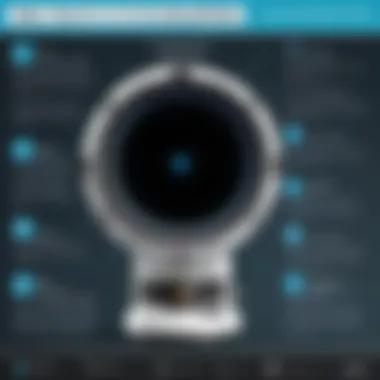
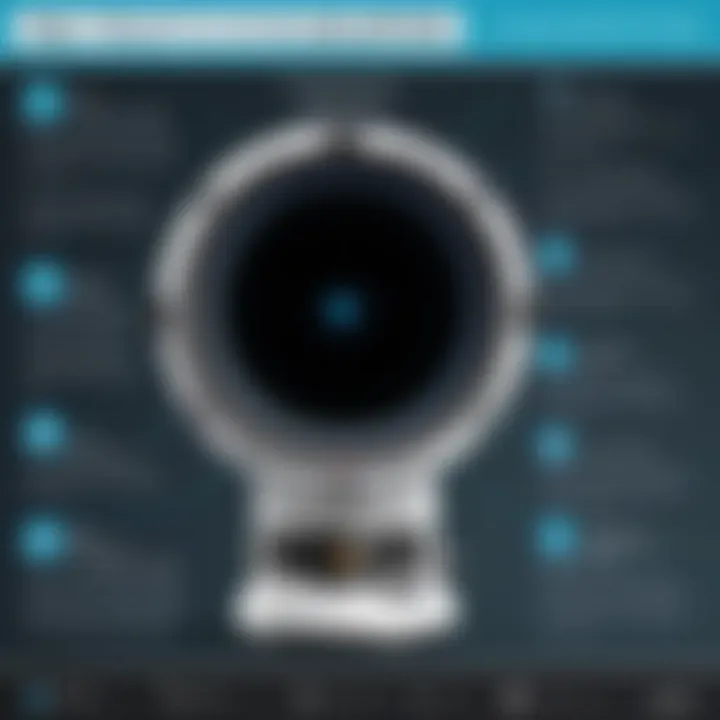
The rise of technology in astronomy also presents educational opportunities that were previously unavailable. With apps acting as digital companions for learning, students can achieve a hands-on experience while working to understand complex astronomical concepts. Educational institutions increasingly incorporate these tech tools into their curricula to enhance learning.
- Interactive Learning: Apps often provide virtual simulations and quizzes, making complex subjects like astrophysics more approachable.
- Field Studies: Students can utilize apps during observational nights, connecting theoretical concepts with practical applications.
- Informed Discussions: Classroom discussions can benefit from real-time data sharing from apps, allowing students to engage in informed debates about their observations.
In summary, the intersection of technology and astronomy fosters an environment ripe for exploration and intellectual growth. As both amateurs and professionals leverage smartphone applications, they not only benefit from enhanced capabilities but also contribute to a broader appreciation of the universe.
Future Trends in Telescopes and Smartphone Technology
Understanding the future trends in telescope technology combined with smartphone applications is essential. It demonstrates how both fields evolve together to enhance astronomical experiences. Users today expect more connectivity and interactivity than ever before. This section delves into emerging innovations, user experience predictions, and sustainability developments in telescopes integrated with smartphone technology.
Emerging Technologies
Emerging technologies are transforming traditional telescopes. One significant trend is the move towards smart telescopes. These devices connect seamlessly with smartphone apps to provide real-time data and a more interactive experience. Features like adaptive optics improve image clarity while reducing distortion, even for amateur astronomers.
Moreover, Artificial Intelligence is increasingly utilized. AI algorithms help identify celestial objects and optimize settings for various environments. Integrated sensors can automatically adjust for atmospheric conditions, making it easier for users to capture high-quality images. Increasing broadband access also allows for cloud-based data sharing among astronomy enthusiasts, facilitating collaborative observations and learning.
Predictions for User Experience
User experience is central to the development of telescope capabilities. As technology advances, we can expect applications to become even more intuitive. Voice control features may soon dominate, allowing users to operate telescopes hands-free. These advancements could help users focus on the observation rather than manual adjustments.
Another prediction involves enhanced augmented reality. Users may experience star maps and celestial information overlayed onto their viewing area through smartphone lenses. Personalization will likely become prevalent, adapting recommendations for stargazing based on user preferences and previous observations. The goal is to simplify the learning curve, making astronomy accessible to a broader audience.
Sustainability and Innovation
Sustainability in telescope technology is becoming a priority. Some manufacturers are investing in eco-friendly materials and practices. Reducing the environmental impact of production is an ongoing discussion within the industry. Furthermore, innovative solar-powered telescopes could pave the way for off-grid stargazing experiences.
Device longevity will also be a focal point. Emphasis on modular designs, which allow for upgrades without needing full replacements, can lead to less waste. This approach not only benefits the environment but also complements the user's investment. In summary, the future of telescopes and smartphone technology suggests a clear trend: enhanced capabilities while remaining mindful of environmental responsibility.
The integration of smartphones with telescopes is reshaping how we explore the cosmos. With continuous advancements, the possibilities for users are expanding.
Finale
In summarizing the discussion around the integration of smartphone applications with telescopes, it becomes clear that this intersection of technology and astronomy provides significant advantages. First, the enhancement in user experience is noteworthy. With smartphone apps, observatory tasks become manageable, even for novice astronomers. The interface of these applications allows users to easily navigate the night sky, enabling efficient identification of celestial objects.
Moreover, the ability for data analysis has transformed the way both amateur and professional astronomers engage with their observations. Apps facilitate recording and processing data, leading to more informed findings. As a result, users can partake in a deeper understanding of astronomical phenomena.
Consideration should also be given to the adaptability of telescope options available in today's market. With factors such as optical quality, app compatibility, and budget constraints guiding the selection process, users are equipped to make informed choices. This allows a wide range of enthusiasts, regardless of their level of expertise or financial investment, to gain access to sophisticated tools for exploration.
As the technology progresses, the expectation is that functionalities of these apps will evolve further, aiming for increased accuracy and enhanced features.
Summarizing Key Points
The journey through this article highlighted several critical aspects:
- Integration of smartphone apps significantly improves ease of use and learning for aspiring astronomers.
- Apps enhance data collection and analysis, fostering a more informed approach to personal observations.
- Important considerations when choosing telescopes include optical quality, compatibility, and budget considerations.
- The future of astronomy looks bright with ongoing advancements in both telescope technologies and smartphone applications.
Final Thoughts on the Future of Astronomy
Looking towards the future of astronomy, the synergy between telescopes and smartphone applications heralds an exciting era. Advancements in technology will likely lead to even more sophisticated applications, providing real-time updates on celestial events and personalized observational recommendations. This integration is set to democratize astronomy, making it accessible and enjoyable for a broader audience while also supporting rigorous scientific research. As both fields evolve, we can anticipate not only enhanced observation capabilities but also a richer understanding of the cosmos.







